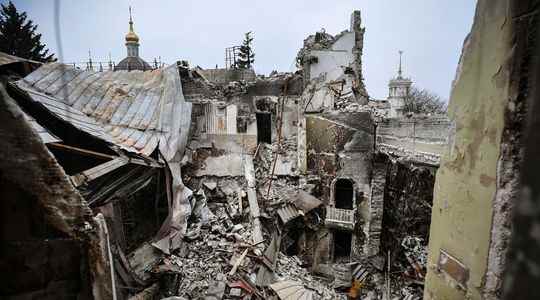It is difficult to imagine what the city of Mariupol looked like barely two months ago, when we are now tirelessly offered the vision of an immense field of ruins and desolation. Since February 24, the first day of the invasion of Ukraine by the Russian army, this port city located on the Sea of Azov has been erected as a key objective of the Kremlin, for strategy and symbolism. After more than fifty days of fighting, this city of 450,000 inhabitants has officially fallen into Russian hands, according to Moscow.
Mariupol, the misplaced
Located 350 kilometers northeast of Crimea, annexed by Russia in 2014, and 88 kilometers south of Donetsk, stronghold of pro-Russian separatists, the city of Mariupol found itself at the start of the invasion in the first line. Its conquest made it possible to connect Crimea to the Donbass region, an objective stated by Vladimir Putin even before the start of the war, and to control Ukrainian ports to extend Russian influence in the Black Sea.
Already coveted by pro-Russian forces in 2014, the city had resisted, defended by the Azov battalion, a Ukrainian regiment accused by Moscow of being made up of neo-Nazis and whose leaders live for many in Mariupol. Occupying this city therefore has a strong symbolic significance for Moscow, when the official discourse presents the Russian intervention in Ukraine as the liberation of the populations from the yoke of a Nazi power.
Mariupol, the bruised
At the end of February, Russia sends a large number of men in order to conquer Mariupol as quickly as possible. From March 1, the inhabitants are deprived of electricity and are struggling to communicate with the outside world. On the 2nd, water and food are lacking, on the 3rd the bridges and railways are destroyed by the Russian army. Thousands of civilians find themselves trapped. Talks between Russia and Ukraine often fail over the fate of Mariupol, a subject of great tension.
And when the Kremlin finally accepts the establishment of humanitarian corridors, it is in the direction of Russia and Belarus that the civilians must be sent. An intolerable provocation, and an interminable wait for the women and children holed up in the cellars.
They will have to wait until early April for mass evacuations to finally be organized. According to Ukrainian President Volodymyr Zelensky, some 3,000 people then managed to flee the city by insecure transport. On April 4, the mayor of Mariupol indicated that 90% of the city had been razed to the ground, the result of a month of incessant bombing.
Also, he declares that his city has “exceeded the stage of humanitarian catastrophe”, which tragic events take care to illustrate. Among them, the bombings of a maternity hospital and a theatre, abuses immediately recorded by the International Criminal Court in charge of the investigation against Russia for war crimes. The abuses committed in Mariupol offend the international community, which will soon be shocked by discovering the fate of Boutcha. On April 12, local authorities reported at least 20,000 dead in the port city.
Mariupol, the heroic
On April 11, the Ukrainian army said it was preparing for “a final battle”, which was to take place on the site of an industrial zone, the port zone having been entirely conquered by the Russians. Nearly 3,000 fighters took refuge in a factory, awaiting assault and death. On April 17 and 19, Russian forces called on the last defenders of Mariupol to surrender. They refuse.
On April 20, kyiv proposes a special session of negotiations on the fate of Mariupol where “about a thousand civilians” are still present, according to the Ukrainian president. And this Thursday, the Russian Minister of Defense announced that the city was under Russian control, except for an industrial site, that of the Azovstal factory, where a small army of irreducible still and always resists the invader.
